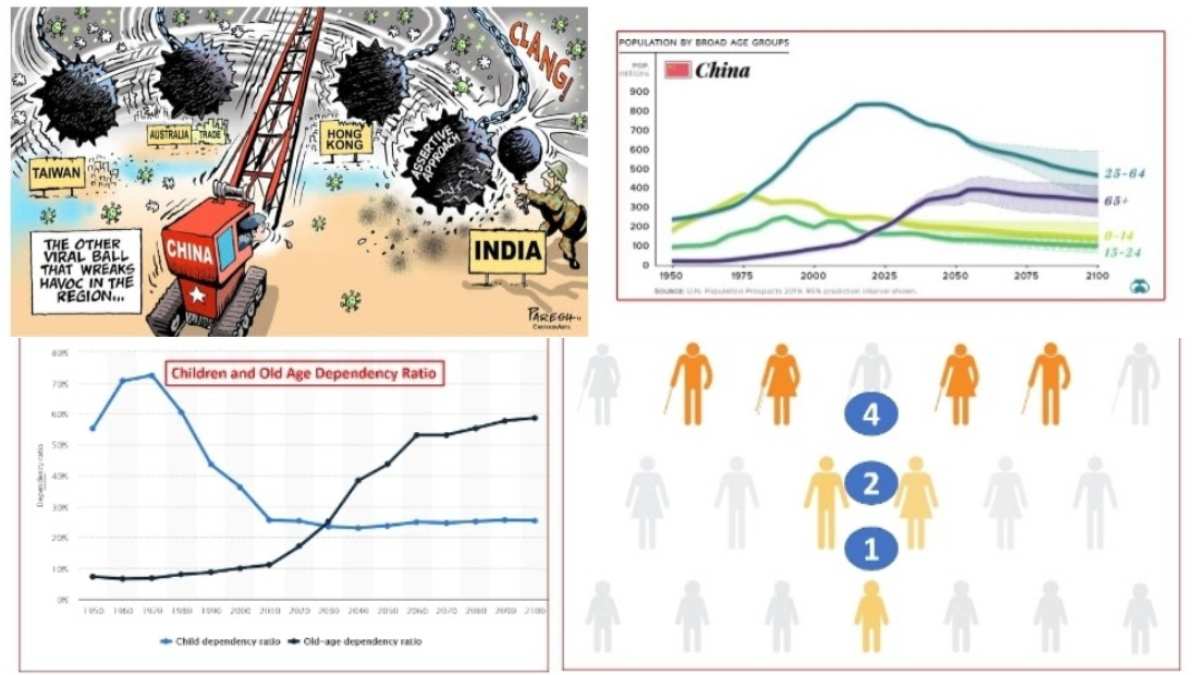The ghost of Galwan will haunt China for the rest of the century. The treachery at Galwan on 15 June, the premeditated assault on an unsuspecting patrol led by Col Santosh Babu shattered the hitherto peace and tranquility along the LAC. Twenty Indian braves made the supreme sacrifice, reportedly inflicting heavy casualties on the PLA. China abided by the agreement in letter in a manner of speaking as they employed the most primitive means to unleash violence using spiked clubs and nails; however, China blatantly violated the spirit of the agreements as also the Wuhan spirit and the strategic guidance by President Xi Jinping to the PLA post Wuhan.
Galwan has not only changed the very dynamics of LAC management forcing India to review the ‘Rules Of Engagement’ but also India China relations. The 1962 generation which had witnessed China’s backstabbing was fading, with the new generation ready to bolster the relationship between the two most populous nations in the world, home to one-third of humanity. The treachery at Galwan will long be remembered by the 650 million-plus youth of India when dealing with China. Be that as it may, the key question is what next? Future incursions by PLA are likely to be more in scope, intensity, depth, and frequency; this will be the new normal. As China blatantly indulges in military coercion, India, and the Army in particular needs to be future-ready to deter China’s aggressive behaviour along the LAC.
China respects strength and India will have to counter China from a position of relative strength. A peaceful, risen, responsible, resurgent India has to ensure continued peace through military preparedness. On account of competing priorities on a limited budget, which will take a further hit due to the Corona impact, the Army will have to look inwards and ensure optimal utilisation of resources to meet and mitigate the China threat. While the disengagement process will be lengthy and laborious, the armed forces should plan ahead and be future-ready.
At present, there is a skewed allocation of combat power, as Pakistan is the primary threat, and China a long term threat. Galwan is a wakeup call with China as a primary adversary and threat now. The armed forces will need a hard look to strategic rebalance the existing force levels. The military strategy against Pakistan should continue to be based on “Proactive Strategy” or the cold start doctrine. Pakistan will continue with its proxy war, and more importantly, a collaborative threat with China is almost a certainty, hence India needs to prepare and not talk of a two-front war. The Integrated Battle Group concept has to be implemented earliest, without degrading offensive capabilities against Pakistan, optimising on combat power to redeploy along Northern Borders. War Waging strategy and operational philosophy against Pakistan has to be reviewed, to achieve military goals and objectives with a view to change Pakistan’s behaviour. The strategic rebalancing of combat power from West to North is a security imperative. It will need political and military prudence and will. India needs to revisit the raising of the mountain strike corps sanctioned in July 2013 post Depsang; the 90,000-strong force, unfortunately, is a stillborn baby without the Rs 64,000 crore financial support. Had the financial allocations been accorded as planned, the raising would have been completed and India would have had the forces for a ‘Quid Pro Quo’ to counter the PLA. Another major weakness for India is the lack of infrastructure leading to and along the LAC, further compounded by terrain fractured sectors. All sectors and sub-sectors are connected mostly by a single road axis. After 1962 in a mistaken belief that China will benefit from our road connectivity, India in a case of self-restraint did not carry out any infrastructure development. In a change of policy 73 strategic roads were sanctioned in 2005 to be constructed by 2012, however, only 62 roads have been operationalised with the present government giving priority to border roads. China, on the other hand, has a state of the art multimodal infrastructure of Highways, Airfields, railway network, and logistics installations. PLA has invested in the Three Rs ie Roads, Radars and Reserves for effective management of the LAC, a concept which can be replicated by the Army. An integrated infrastructure development plan under an empowered committee for time-bound implementation is a must.
India’s most sensitive borders are manned by Army and ITBP which functions directly under the Ministry of Home affairs. This dual control often leads to contradictory and conflicting orders emanating from the two ministries and intermediary headquarters leading to confusion. As per the Group of Ministers Report (Para 5.1) the disputed borders are to be manned by the army. The BSF functions under the operational control of the Army along LC. This needs to be corrected immediately as it is a potential for spiral when dealing with PLA. The intelligence, surveillance and reconnaissance capabilities too should be upgraded and harmonised.
The strategic locational advantage of Andaman and Nicobar Islands has to be exploited as a counterpressure, and a threat in being to Chinese shipping in the Indian ocean, exploiting its ‘Malacca Dilemma’. The 40-odd advance landing grounds along the LAC should be operationalised and upgraded to exploit the terrain advantage of IAF as these are located at lower altitudes close to the borders.
At the diplomatic level, India should ‘Bind To Balance’ with like-minded nations having congruence of interests. The QUAD is one good option. As China has no care and consideration for India’s sensitivities, it is time for India to selectively play on Chinese sensitivities in Tibet, Taiwan, Hong Kong, Xinjiang and the South China Sea.
This time China went wrong in assessing India’s resolute response along the LAC, next time it will be prepared. India, and the Army in particular, should be future-ready to counter China’s aggressiveness, ensuring peace from a position of strength.
Lt Gen Vinod Bhatia (Retd) is a former DGMO of the Indian Army and currently the director of CENJOWS.

